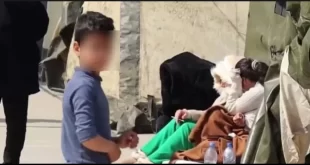Dec 23, 2014, al-Akhbar
Nearly 300 cultural heritage sites have been destroyed, damaged and looted in Syria since 2011, the UN said Tuesday in a report citing satellite evidence.
The report focused on 18 areas, of which six are UNESCO-listed: the Old City of Aleppo; Bosra; Damascus, the Dead Cities of northern Syria; Crac des Chevaliers and Palmyra.
Detailed analysis of satellite imagery of 290 locations at these sites showed 24 of them had been destroyed, 104 severely damaged, 85 moderately damaged and 77 possibly damaged.
More than three years into a bloody war, Syria’s historical sites have suffered from widespread looting and damage, according to UNESCO.
The situation has worsened since Islamic State of Iraq and Syria (ISIS) jihadists, whose strict Salafi interpretation of Islam deems the veneration of tombs and non-Islamic vestiges to be idolatrous, seized swathes of Syria and Iraq in recent months, destroying sites and burning precious manuscripts and archives.
“Looting, destruction from aerial bombardment and other explosions, as well as infrastructure construction at cultural sites significantly threatens the heritage to future generations of these historic structures and objects,” the UN said in a statement.
The United Nations said the report was “alarming testimony of the ongoing damage that is happening to Syria’s vast cultural heritage” and called for efforts to scale up their protection.
The satellite images were put together by UNOSAT, a Geneva-based UN institute.
“It is very sad for Syria as well as the world that this is happening,” said UNOSAT director Einar Bjorgo.
“Humankind is losing hundreds and thousands of years of heritage,” he told AFP. “Perhaps some of it can be rebuilt, but what is looted may be lost, unless it resurfaces and is given back.”
Among the areas exposed to major damage were UNESCO world heritage sites such as Aleppo, where settlements have been in place for 7,000 years, and the fabled desert Greco-Roman oasis of Palmyra.
Aleppo’s old city, in particular, has witnessed some of the conflict’s most brutal destruction,as the old citadel had been caught in the line of fire.
In early December, UNESCO chief Irina Bokova called for the creation of “protected cultural zones” to save heritage sites in conflict-torn Iraq and Syria that were at risk of “cultural cleansing.”
“We must create protected cultural zones around heritage sites, through stronger engagement with local actors,” Bokova said.
According to Bokova, efforts should start with the “highly iconic site” of the Umayyad mosque in the northern Syrian city of Aleppo.
“I believe that the Umayyad mosque, located within the World Heritage site of the old city of Aleppo, could and should be our starting point. It is not too late to take action.”
The minaret of Aleppo’s famed Umayyad mosque was destroyed last year. The mosque, originally built in the eighth century and then rebuilt in the 13th century, has been left pockmarked by bullets. The ancient covered market, or souk, has also been damaged by the intense fighting in Syria’s second city.
Syria has six World Heritage Sites: the ancient cities of Damascus, Bosra and Aleppo, the oasis of Palmyra, the castles of Crac des Chevaliers and Qal’at Salah El-Din – which counts as one site – and the ancient villages of northern Syria.
All six were placed on the list of World Heritage in Danger by the United Nations Educational, Scientific and Cultural Organization committee at its annual meeting in Phnom Penh last year.
Similarly in Iraq, ISIS has destroyed shrines, churches and manuscripts in Mosul, Tikrit and other areas it controls and excavated sites to sell objects abroad.
In September, Al-Arbain mosque, a reputed burial site of 40 early Muslim figures, including companions of Prophet Mohammed, was blown up.
ISIS advocates a return to the origins of Islam but also considers worshipping at graves to be tantamount to idolatry and has blown up several revered shrines across the country.
SIS also rigged the Green Church, a striking structure carved into the rock and first built in the seventh century.
Moreover, in attacks reminiscent of assaults on shrines in Afghanistan and Mali, militants in Mosul destroyed statues of Othman al-Mousuli, a 19th Century Iraqi musician and composer, and of Abu Tammam, an Abbasid-era Arab poet.
Besides destroying Iraq’s cultural heritage sites, officials said in September that ISIS militants are using intermediaries to sell priceless treasures, such as ancient Iraqi artifacts, on the black market to finance their activities.
The militants gained some experience of dealing in antiquities after taking control of large parts of Syria, but when they captured the northern Iraqi city of Mosul and the Nineveh province in June, they gained access to almost 2,000 of Iraq’s 12,000 registered archaeological sites.
Iraq’s heritage already suffered a major blow in the lawlessness and looting that followed the toppling of President Saddam Hussein by US-led forces in 2003, when looters torched buildings and ran off with treasures thousands of years old.
 Syria Support Movement solidarity with the Syrian people
Syria Support Movement solidarity with the Syrian people




